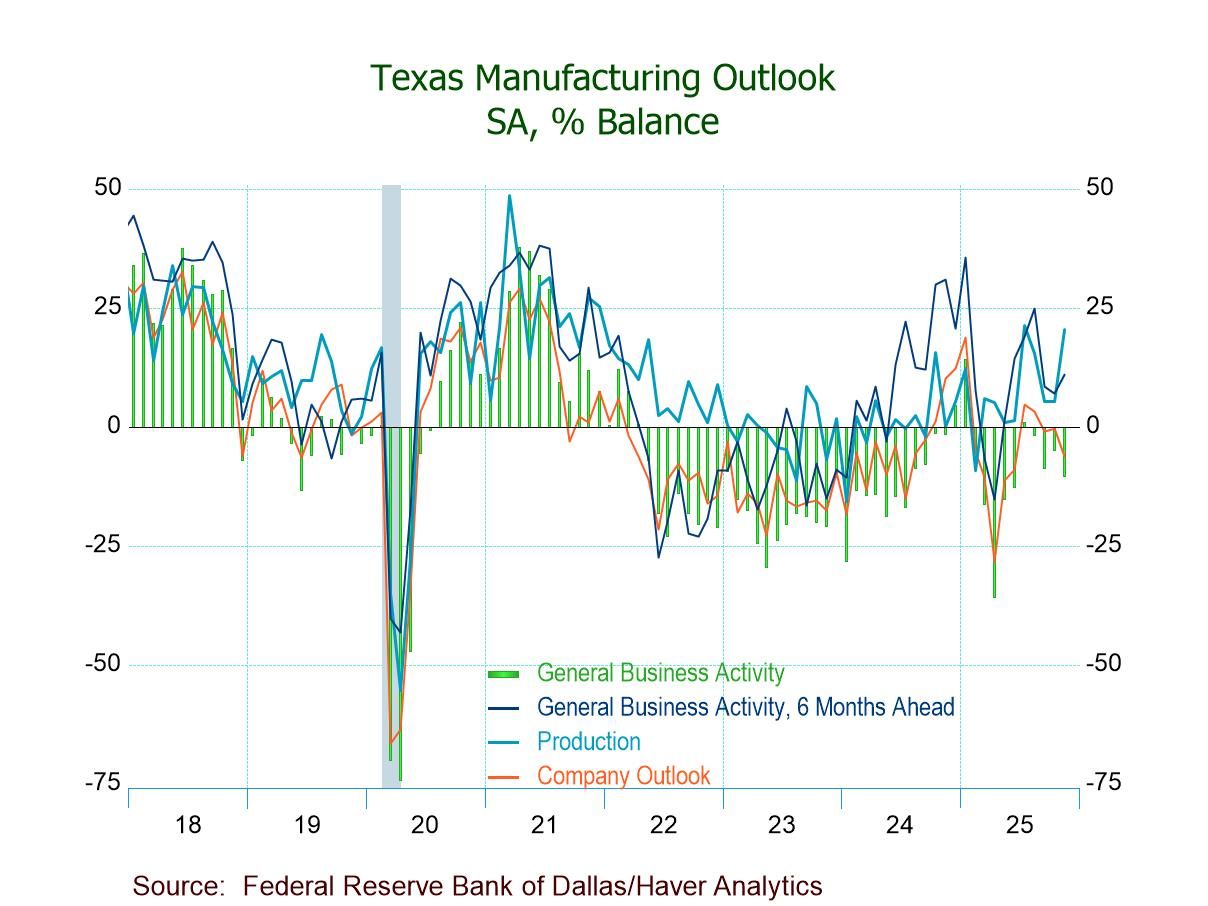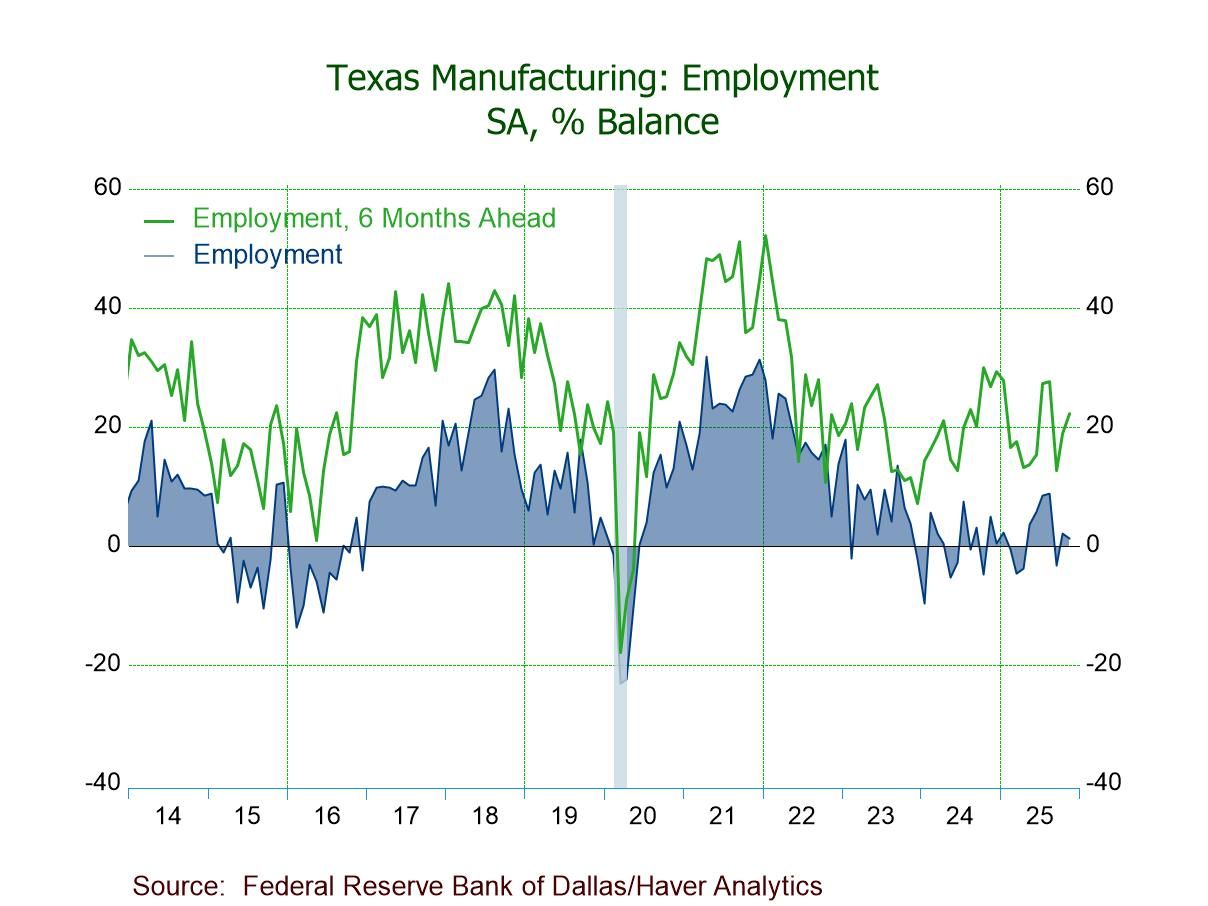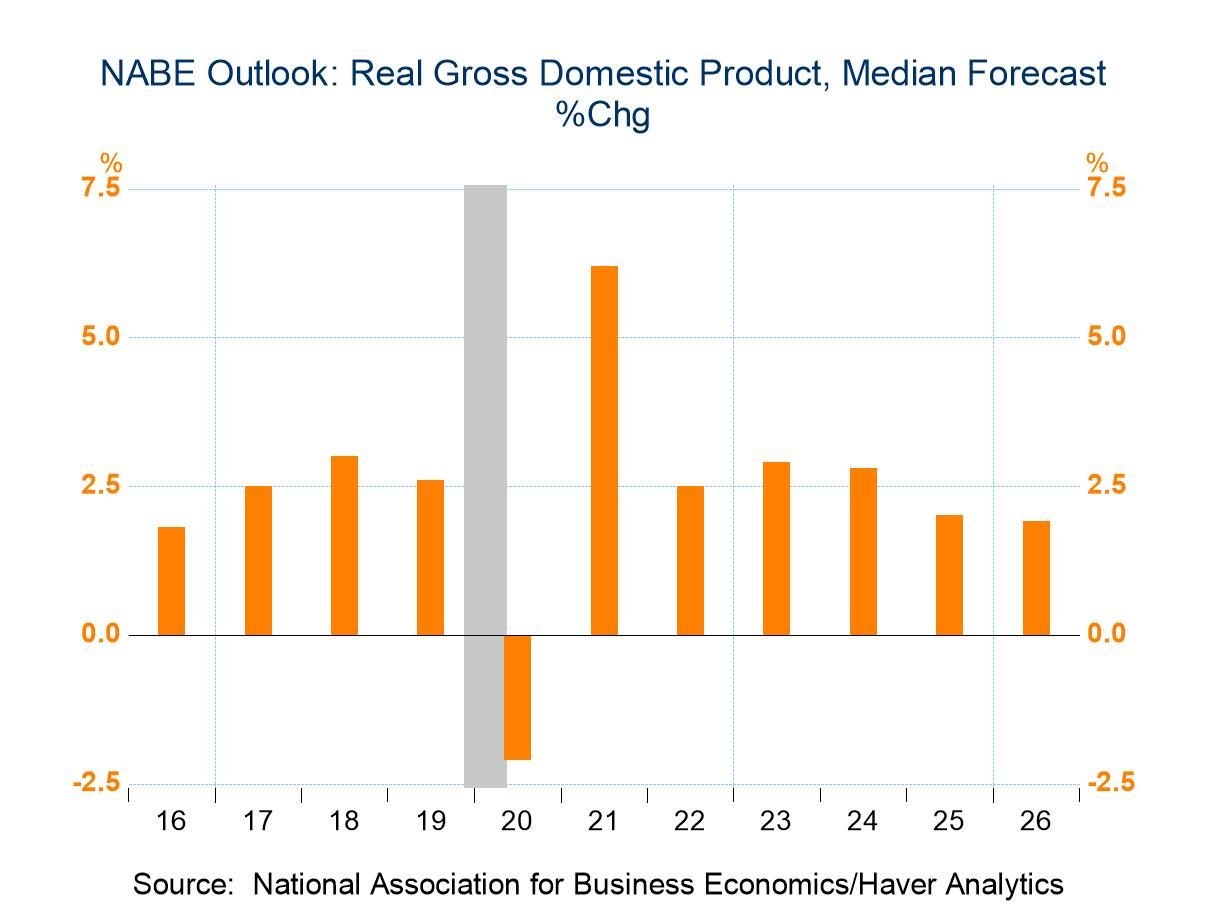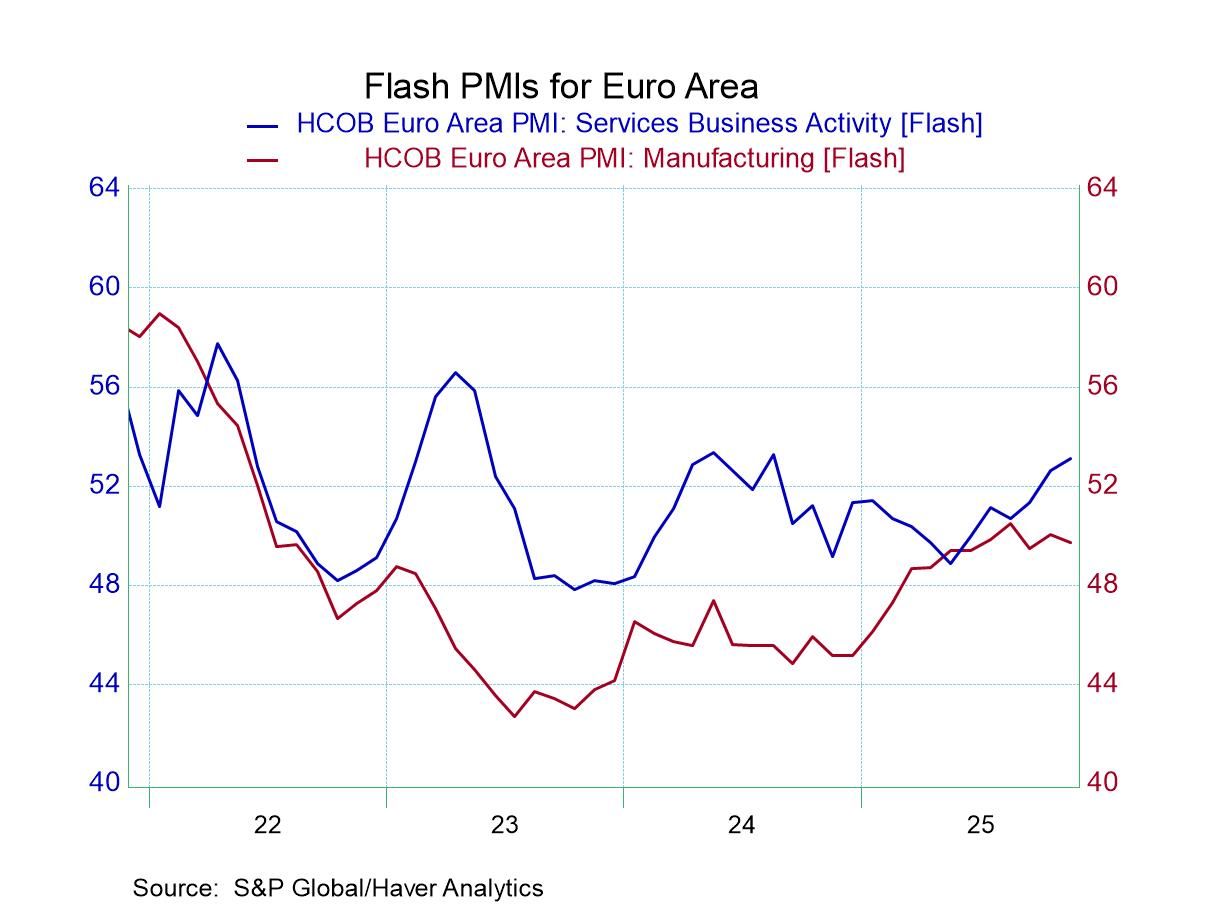Texas General Business Activity Remains Negative in November, But Expectations Stay Positive
Summary
- General Business Activity down in Nov. to -10.4, lowest level since June.
- Company Outlook (-6.3) negative for the third straight mth. and at a five-month low; Production (20.5) at a four-month high.
- New Orders Growth (-1.3) still negative, but New Orders (4.8) turns positive after two negative readings.
- Employment (1.2) positive for the sixth time in seven mths.
- Prices Received up 3.1 pts. to 10.8; Prices Paid up 1.9 pts. to 35.3.
- Future General Business Activity up to 11.0, a three-month high.


General business activity in Texas worsened in November after remaining in negative territory in October, according to the Texas Manufacturing Outlook Survey conducted by the Federal Reserve Bank of Dallas. The overall measure, the general business activity index, was at -10.4 in November, down from -5.0 in October and -8.7 in September. The November reading was the lowest level since June; although up from a low of -35.8 in April, it was below a high of +14.1 in January and -1.7 in November 2024. The index had been in negative territory from February through November 2025, except for a one-month positive reading of +0.9 in July. An 18.9% of respondents reported improved business activity in November, slightly up from 18.4% in October. A higher 29.3% of respondents reported worsened business conditions, up from October's 23.4%. The company outlook index fell to -6.3 in November, the third consecutive negative reading and the lowest since June, from -0.3 in October. An increased 19.5% of respondents expected improved company outlook this month while a higher 25.8% expected deterioration. Data were collected between November 10 and 18 from 70 Texas manufacturers.
The production index, a key measure of state manufacturing conditions, rose to 20.5 in November after having registered at 5.2 in the previous two months, indicating production expanded for the ninth straight month and at the highest level since July. An increased 38.4% of respondents reported higher production this month while a lessened 17.9% reported a decline. The capacity utilization index recovered to 19.4 in November, the highest reading since December 2021, from -1.1 in October; it was up from a low of -15.0 in January 2024 but well below a record-high 46.3 in March 2021.
The growth rate of orders index increased to -1.3 in November from -3.7 in October, marking the strongest of three successive negative readings. The index was above a low of -22.0 in April and a low of -24.3 in November 2023 but significantly below a peak of 29.6 in April 2021. The new orders index rose to 4.8 this month from -1.7 in October, indicating a rise in demand for the first time since August. The index was above a low of -20.0 in April and a low of -21.8 in November 2022 but well below a high of 22.6 in February 2022 and a record-high 38.6 in April 2021. The shipments index jumped to 15.1 this month, the fifth consecutive positive reading and the highest since February 2022, after declining to 5.8 in October. The unfilled orders index slipped to -6.6 in November, the 15th straight negative reading, from -6.4 in October. The index was below a high of 1.4 in August 2024 but above a low of -26.3 in July 2024. Meanwhile, the delivery time index fell to -8.4 this month, the lowest reading since April, from -7.2 in October.
Labor market indexes showed relatively flat employment conditions and longer workweeks in November. The employment index edged down to 1.2 this month from 2.0 in October, marking the sixth positive reading in seven months, with the near-zero level indicating little change in employment. The latest reading, while up from a low of -9.7 in January 2024, was well below a high of 17.9 in January 2023 and a record-high 31.8 in April 2021. Seventeen percent of respondents reported net hiring in November, while 15.9% reported net layoffs—virtually unchanged from October. The hours worked index increased to 9.9 this month, the highest reading since August, after falling to -5.5 in October. The wages & benefits index rebounded to 15.4 in November from 14.2 in October; nevertheless, having been trending downward since a peak of 55.0 in March 2022 and remaining below the historical average.
Inflationary pressures increased slightly this month. The index for prices received for finished goods rose to 10.8 in November following a 4.0-point decline to 7.7 in October; it was up from a low of -7.0 in November 2023 but meaningfully below a high of 47.4 in March 2022 and a peak of 51.4 in October 2021. An increased 22.0% of respondents reported raising prices in November while 11.2% reported lowering prices. The index of prices paid for raw materials rose to 35.3 this month after a 10.0-point fall to 33.4 in October. The index was well above a low of 1.0 in June 2023 but significantly below 73.2 in March 2022 and a record-high 83.8 in November 2021.
Expectations on future manufacturing activity remained positive this month. The future general business activity index increased to 11.0 in November after declining to 7.0 in October, registering the seventh straight positive reading and the highest since August. The future production index rebounded to a three-month-high 33.7 from October’s 21.0. Other indexes of future manufacturing activity also rose in November (vs. October), signaling increased activity six months ahead: company outlook (16.2 vs. 7.1), capacity utilization (34.0 vs. 17.5), new orders (39.2 vs. 18.3), growth rate of new orders (27.8 vs. 8.2), shipments (27.0 vs. 18.5), and employment (22.3 vs. 18.9). Meanwhile, future indexes for wages & benefits (39.1 vs. 41.5) and capital expenditures (12.9 vs. 26.8) declined in November (vs. October), but both remained in positive territory.
Each index is calculated by subtracting the percentage reporting a decrease in activity from the percentage reporting an increase. When all firms report rising activity, an index will register 100. An index will register -100 when all firms report a decrease. An index will be zero when the number of firms reporting an increase equals the number reporting a decrease. Data for the Texas Manufacturing Outlook, conducted by the Federal Reserve Bank of Dallas, can be found in Haver's SURVEYS database.


Winnie Tapasanun
AuthorMore in Author Profile »Winnie Tapasanun has been working for Haver Analytics since 2013. She has 20+ years of working in the financial services industry. As Vice President and Economic Analyst at Globicus International, Inc., a New York-based company specializing in macroeconomics and financial markets, Winnie oversaw the company’s business operations, managed financial and economic data, and wrote daily reports on macroeconomics and financial markets. Prior to working at Globicus, she was Investment Promotion Officer at the New York Office of the Thailand Board of Investment (BOI) where she wrote monthly reports on the U.S. economic outlook, wrote reports on the outlook of key U.S. industries, and assisted investors on doing business and investment in Thailand. Prior to joining the BOI, she was Adjunct Professor teaching International Political Economy/International Relations at the City College of New York. Prior to her teaching experience at the CCNY, Winnie successfully completed internships at the United Nations. Winnie holds an MA Degree from Long Island University, New York. She also did graduate studies at Columbia University in the City of New York and doctoral requirements at the Graduate Center of the City University of New York. Her areas of specialization are international political economy, macroeconomics, financial markets, political economy, international relations, and business development/business strategy. Her regional specialization includes, but not limited to, Southeast Asia and East Asia. Winnie is bilingual in English and Thai with competency in French. She loves to travel (~30 countries) to better understand each country’s unique economy, fascinating culture and people as well as the global economy as a whole.







 Global
Global